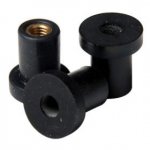dave10a
Well-known member
I am presently considering hooking up solar panels that I removed from my past motorhome. Since I do mostly "snow bird" in the South and store the trailer when not using it I would like to get the most out of my panels (two 100 watt). The panels would be backup where there is no power, keep the batteries charged and I would like to install a grid tied inverter along with a 3kw inverter so I can pump power from the panels to the RV park that charges for power while snow birding. My concerns are mounting the panels on the roof. The roof is sturdy enough to walk on but I am not sure how much material there is under the rubber and will lag screws really hold the panels on with strong wind while traveling or stationary. I know many 5th wheels have panels, but I am not sure how they are mounted and how secure they are.
Last edited:

